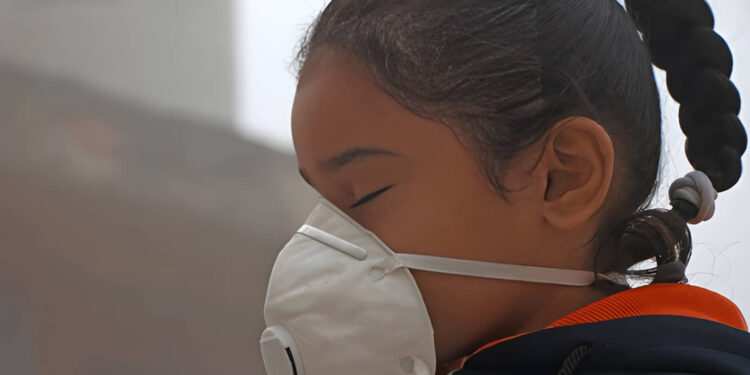The air quality here in Delhi has turned thick with smog and the national capital region is bearing the brunt of severe Post-Diwali pollution level. They’re less polluting than conventional fireworks are, and though the Indian government was hoping for “green” firecrackers to be its salvation this year, with jam-packed audiences inhaling cascades of toxins in tighter time slots than ever, the fiestas have left a gasping city in their wake.
Delhi wakes up to toxic skies
The morning after Diwali 2025, the Air Quality Index (AQI) in New Delhi ranged between 347 and 448 at several stations—reprehensibly “very poor” to “severe”. Areas such as Dwarka, Wazirpur, Anand Vihar and Ashok Vihar surpassed 400 while localities like Patel Nagar and Greater Kailash crossed 500 making the air practically unbreathable. Delhi was the most polluted city in the world for major part of Tuesday, recording a particulate pollution level (PM2. 5 levels nearly 59 times higher than the World Health Organization’s safety limit.
Green crackers fail to bring relief
This year, the Supreme Court had eased its blanket ban of last year and permitted use of “green crackers” – made up entirely of recycled paper but with little or no firework effect – only between 6-7 am and 8-10 pm. But the rule was largely ignored. Crackers were burst by residents till late through the night, with the pollution reaching its peak. ‘Green Fireworks’ emit only 30-50% less particulate matter than traditional fireworks While these so-called eco-friendly fires are supposed to produce 60-70 percent “less smoke”…. which is hardly a significant enough degradation when compounding pollution.
A crisis years in the making
Fireworks aren’t the only culprit. Winter, with its stagnant air, and the burning of crop residue in adjacent Punjab and Haryana states combine to make Delhi’s pollution worse year after year. Forecaster point out that the reduction in wind speed, combined with colder temperatures leads to particulate matter being trapped near the surface – creating thick smog enveloping the capital. The night sky, aglow with lights, turned gray on Tuesday morning for people in the region as visibility dropped so horrendously that landmarks like India Gate and Akshardham were no longer visible.
Authorities impose emergency measures
The Commission for Air Quality Management (CAQM) has issued an alert in view of the worsening air quality, and for the next few days, construction activity will remain prohibited and use of diesel generators will be banned under ‘Stage II’ of Graded Response Action Plan (GRAP) in Delhi-NCR. The Ministry of Earth Sciences has warned that cyles are unlikely to improve in the next few days as weather conditions remain adverse.
Public health at risk
The surge in poisonous particles is expected to cause dangerous breathing problems, particularly for children, the elderly and people with asthma or chronic obstructive pulmonary disease (COPD), medical experts have warned. Hospitals in Delhi have already registered a substantial spike in the number of people complaining about coughing, congestion in chest and burning eyes after night of Diwali.
A festival under the shadow of smog
With all its lights and celebrations, Diwali underlines another year that has left Delhi’s environment as pathetic as ever. Every year’s festivities revive an old debate over cultural custom and public health. And as authorities promote “green” alternatives, some of that pollution hasn’t dissipated — suggesting that meaningful change will require not only enforcement but the development of cleaner alternatives and a societal move away from fireworks at large.


